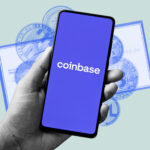In the highly competitive and ever-evolving automotive industry, few companies have managed to execute a turnaround as impressive as Kia Motors Corporation. Once known for producing budget-friendly cars with questionable quality, Kia has transformed itself into a global automotive powerhouse renowned for its innovative designs, high-quality vehicles, and a commitment to sustainability. This article delves into the remarkable journey of how Kia achieved its massive turnaround, navigating through challenges, adopting new strategies, and ultimately reshaping its image in the automotive world.
The Humble Beginnings of Kia
Kia’s story begins in 1944 when it was established as a manufacturer of steel tubing and bicycle parts in South Korea. It wasn’t until 1952 that the company ventured into the automotive industry, producing Korea’s first bicycle, and eventually, the first domestic motorcycle and three-wheeled truck. Kia’s automotive journey was marked by modest beginnings and a focus on the domestic market.
Entering the Global Stage
Kia made its first international foray in the 1970s when it began exporting vehicles to countries such as Vietnam and the Middle East. However, the company’s reputation during this period was far from stellar. Kia vehicles were perceived as low-quality, unreliable, and lacking in innovation. The company’s initial attempts to penetrate the global market faced significant challenges.
A Lifeline from Hyundai
Kia’s fortunes began to change in the late 1990s when it faced financial turmoil due to the Asian financial crisis. Hyundai Motor Company, its South Korean counterpart, stepped in to provide a lifeline by acquiring a significant stake in Kia. This strategic alliance marked a turning point for Kia as it gained access to Hyundai’s resources, technology, and expertise.
Quality Improvements and Product Innovation
One of the first areas Kia addressed during its turnaround was the quality of its vehicles. The company invested heavily in research and development, adopting stringent quality control measures and improving manufacturing processes. This commitment to quality was evident in the improved reliability and durability of Kia cars, gradually erasing the negative perceptions associated with the brand.
Aesthetic Transformation
Kia also embarked on a journey of aesthetic transformation. The company introduced a new design philosophy called “The Power to Surprise,” which focused on creating vehicles that were not only reliable but also visually appealing. The appointment of Peter Schreyer, a renowned automotive designer, as Kia’s Chief Design Officer played a pivotal role in reshaping the brand’s image. Iconic models like the Kia Optima and the Kia Soul showcased the brand’s newfound commitment to design excellence.
Targeted Market Expansion
Kia strategically expanded its presence in key markets around the world. The company identified regions with significant growth potential, such as the United States and Europe, and tailored its product offerings to suit local preferences. Kia’s efforts were rewarded with increased sales and market share in these regions.
Investing in Sustainability
In response to growing environmental concerns, Kia made a commitment to sustainability. The company began developing eco-friendly technologies and introduced hybrid and electric vehicles to its lineup. Models like the Kia Niro and the Kia Soul EV gained recognition for their eco-conscious design and performance.
Effective Marketing and Branding
Kia’s marketing efforts played a crucial role in reshaping its image. The company engaged in innovative marketing campaigns and partnered with high-profile events like the FIFA World Cup and the Super Bowl. These initiatives helped Kia connect with a wider audience and position itself as a modern, dynamic brand.
Awards and Recognition
Kia’s commitment to quality and innovation did not go unnoticed. The company received numerous awards and accolades for its vehicles, including high rankings in J.D. Power’s Initial Quality Study and Consumer Reports’ reliability ratings. These endorsements further solidified Kia’s reputation for producing high-quality cars.
The Rise of SUVs
Kia’s strategic move into the SUV market paid off handsomely. The company introduced a range of SUVs, such as the Kia Sportage and the Kia Seltos, which resonated with consumers seeking versatile and spacious vehicles. The SUV segment became a significant contributor to Kia’s global sales growth.
A Remarkable Transformation
Kia’s massive turnaround serves as an inspiring case study in the automotive industry. The company’s journey from a budget-focused, quality-challenged brand to a global automotive powerhouse is a testament to the power of strategic alliances, quality improvement initiatives, innovation, and effective branding.
Kia’s commitment to customer satisfaction, sustainability, and design excellence has not only reshaped its image but also catapulted it into the upper echelons of the automotive world. As the company continues to invest in cutting-edge technology, electric mobility, and sustainable practices, Kia’s future appears brighter than ever.
In an industry where reputations are hard to change, Kia’s remarkable turnaround offers valuable lessons for companies looking to transform their image, embrace innovation, and succeed in an increasingly competitive global marketplace.
The Road Ahead: Sustainability and Electric Mobility
Kia’s commitment to sustainability and electric mobility has become a defining feature of the company’s transformation. As the world grapples with environmental concerns and a shift towards electric vehicles (EVs), Kia has positioned itself as a leader in this field. The company’s EV offerings, such as the Kia EV6, have garnered attention for their cutting-edge technology, impressive range, and eco-friendly attributes.
Kia’s investment in electric mobility extends beyond the vehicles themselves. The company has been developing a robust charging infrastructure and exploring innovative solutions to make EV ownership more convenient and accessible for consumers. This forward-looking approach aligns with global trends and positions Kia as a key player in the future of transportation.
Global Manufacturing Presence
Kia’s global manufacturing presence has been a critical factor in its turnaround. The company has established manufacturing facilities in key regions, including South Korea, the United States, Europe, China, and India. This global network allows Kia to produce vehicles tailored to local markets efficiently while minimizing production costs and logistics challenges.
Overcoming Challenges
While Kia’s transformation has been remarkable, it has not been without its challenges. The automotive industry is highly competitive, with rapidly changing consumer preferences, regulatory requirements, and technological advancements. Kia has had to adapt quickly and make strategic decisions to stay ahead of the curve.
One challenge Kia faced was the COVID-19 pandemic, which disrupted global supply chains and led to production slowdowns. However, the company demonstrated resilience by swiftly implementing safety measures and adjusting production schedules to minimize disruptions.
Commitment to Safety
Kia’s commitment to safety has been a cornerstone of its transformation. The company has invested in advanced driver-assistance systems (ADAS) and safety technologies, earning high safety ratings for its vehicles. As consumer awareness of safety features continues to grow, Kia’s dedication to protecting its customers has become a significant selling point.
Community Engagement and Corporate Social Responsibility
Kia’s transformation goes beyond business success; it also encompasses corporate social responsibility (CSR) and community engagement. The company has been involved in various philanthropic initiatives, supporting education, healthcare, and environmental conservation. Kia’s active participation in social and community activities has helped build a positive brand image and strengthen its connection with consumers.
The Competitive Landscape
Kia’s journey to a massive turnaround has not gone unnoticed by its competitors. Established automotive giants have had to take Kia seriously as a formidable contender in various market segments. This competition has driven innovation across the industry, benefitting consumers with better-quality vehicles and more choices.
An Ongoing Success Story
Kia’s massive turnaround is a testament to the company’s resilience, commitment to quality, and willingness to embrace change. From its humble beginnings as a domestic manufacturer to its current status as a global automotive powerhouse, Kia’s transformation has been nothing short of remarkable.
As the automotive industry continues to evolve, Kia’s focus on sustainability, electric mobility, safety, and community engagement positions it well for the future. The company’s dedication to innovation and excellence serves as an inspiration not only for the automotive sector but also for businesses across various industries seeking to reinvent themselves and thrive in an ever-changing world.
Kia’s journey from obscurity to prominence is a powerful example of what can be achieved through strategic planning, innovation, and a steadfast commitment to customer satisfaction. It reminds us that with the right vision and determination, even the most challenging turnarounds are possible, and success can be achieved on a global scale. Kia’s story is not just a remarkable success story; it is a testament to the limitless possibilities of transformation and reinvention in the business world.







